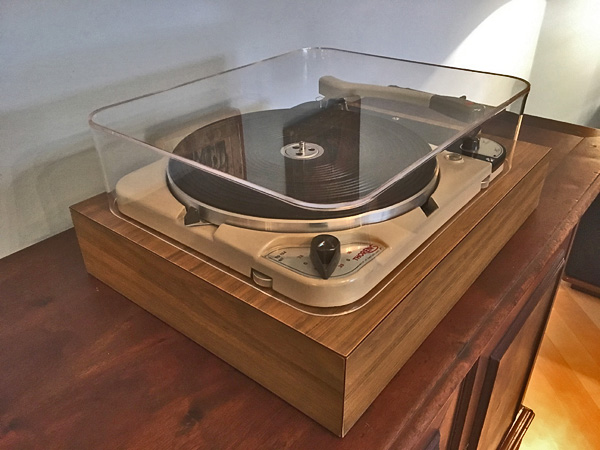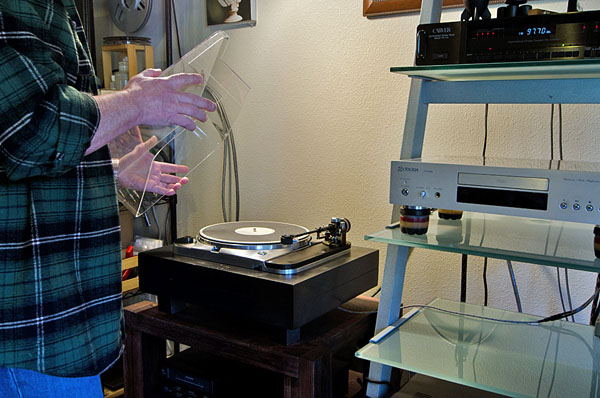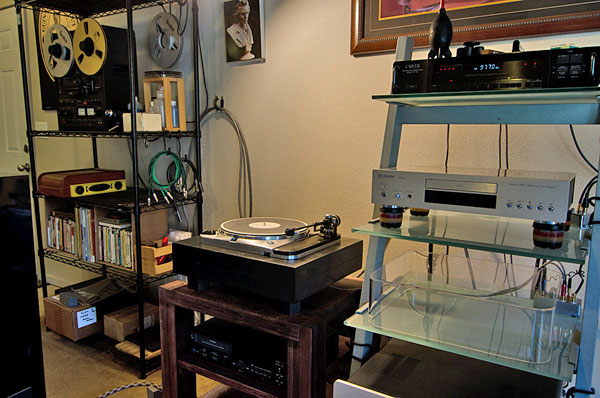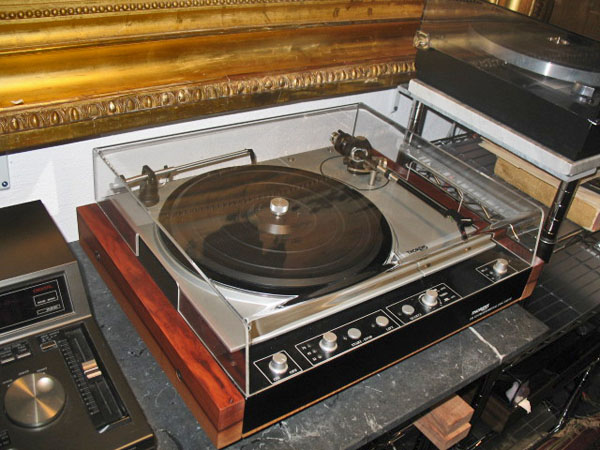-edible zone-
-- Design Purpose: To shield the turntable against the intrusion of dust as well as protect from physical damage to the record player and its component parts.
*
-- Above: Hood minus cutout.
*
-- Above: Hood with cutout.
-- Dimensions, external: 16-1/4" Wide, 13-3/8" Deep, 4-11/16" High. Thickness of the acrylic plate: .141" (9/64")
*
 (click thumbnail for full image)
(click thumbnail for full image)
-- The fit: The internal boundaries of the dustcover hugs the chassis
perimeter of the TD124 with a quarter-inch to spare all around.
Vertically, the inside upper surface of my sample clears the top of my
Graham tonearm by what appears to be one inch or possibly just slightly
less. Make that one inch.
Design notes: This dustcover is a
lift-off design where the operator lifts the dustcover completely off
the turntable and then must place it somewhere safe while playing
records with it.
This differs from original equipment dustcovers
many of us saw in the 1970's that were equipped with hinges to the back
side of the cabinetry that allowed one to easily lift the front end of
the dustcover up and backward into a parked position that would hold it
stationary while the operator loads and unloads records. Not as
convenient as the park-able kind of dustcover, the 'lift-and-remove'
method does avoid the dustcover becoming an acoustic reflector of the
sort that directs airborne sound waves toward the
cartridge/stylus/record groove interface, and in some cases actually
causing acoustic feedback of the kind that can lower playback quality. A
popular philosophy today suggests that dustcovers only belong on the
player when it isn't working. The dustcover on review here aligns with
that latter philosophy.
In practice: My sample has the optional
cutout for 9 inch tonearms that have counterweight assemblies hanging
further out the back than did standard issue tonearms of the day. Today,
in fact, almost any 'optional' choice of tonearm would require the
cutout to fit this dustcover.
Ferruccio charges more for 'Hoods'
that have the cutout due to the added labor and care taken to produce
this cut.
Removing and replacing is simple enough. The weight is
light. There is nothing tricky about balance. You do need to have a
parking place set aside to receive this dust cover. I leave this detail
to the individual owner. But it is a requirement. The thing has to park
somewhere when you're playing records. For my own purpose I choose not
to place the dust cover over the player while a record is in play.
With the dustcover in my hands it feels sturdy enough around the
cutout area with no apparent flexing unless one actually applies force
to this area. So, with moderate care in handling, it seems sturdy and
robust enough for the task. But don't sit on it!
*
*
-- Above photo: Hood is parked to the right of the TD124 on the audio
rack and safely out of the way. I could just as well have put the Hood
on the black metal rack to the left. Customize your own parking spot.
Apart from the functional benefits, one more thing seems readily
apparent to me -- The Hood dresses up the appearance and impression of
this record player quite substantially.
Who makes these
dustcovers? Enter one Ferruccio in Switzerland. What I can tell you
about Ferruccio is that he really likes Thorens. Over the years he has
sent in some photos of some of his restoration projects. Worthy of note
is this rare Thorens TD524 direct drive model from 1982 which has been
restored according to Ferruccio's direction. Note also the rather nice
looking dust cover on this model. He had that made in addition to the
custom cabinet work.
*
-- He's also sent in photos of his Thorens TD126 mkII and also a
TD150 mkII in all original condition. But this TD524 really grabs my
attention. A rare and luxurious Thorens direct drive model.